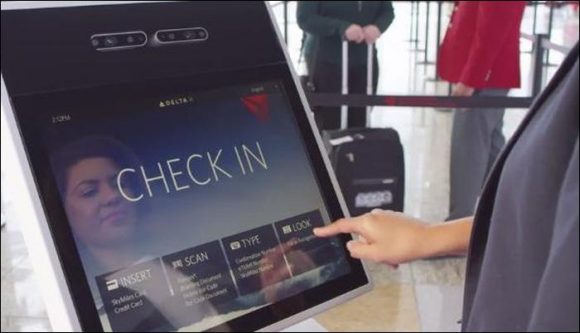Instead of scanning her boarding pass, the airport gate scanned her face. In April 2019, traveler MacKenzie Fegan was left surprised and confused when she boarded a JetBlue flight from the United States to Mexico, without handing over her passport, or travel documents.
“There were plastic barricades across the front of each lane, I look to my right, and the gate opens,” she tells CNN Travel. “I was like, ‘What, just happened?’ There was no boarding pass scan, nothing like that.”
Before she’d even sat down on her airplane seat, Fegan, a New York-based journalist, fired off a Tweet to JetBlue, asking the airline to explain the process. “Did facial recognition replace boarding passes, unbeknownst to me? Did I consent to this?” She wrote, clicking send.
About 10 minutes later, Fegan received a reply: “You’re able to opt out of this procedure, MacKenzie. Sorry if this made you feel uncomfortable,” read the response. Implicit in the Tweet was the answer that, yes, on some JetBlue flights, facial recognition and biometric technology is used — seemingly to speed up boarding, and sift out security threats.
Fegan’s initial Tweet received over 8,500 likes, sparking a thread where passengers voiced privacy concerns and debated the pros and cons of a technology that’s becoming omnipresent in airports across the world. “We are increasingly moving towards this type of automation — personal data and biometric data being available to companies and to corporations,” says Fegan. “I had a lot of questions, I think everybody should have a lot of questions.”
Biometrics explained
Biometric technology describes tech that uses your physiological characteristics — think, the iPhone thumbprint that lets you use Apple Pay or unlock your phone without a password.
Other examples include iris recognition, fingerprints and facial recognition. These all seem to have become ubiquitous in recent years, but the technology’s not new. It’s not even new to airports.
Raoul Cooper, British Airways’ senior digital design manager, tells CNN Travel that BA — alongside other airlines flying domestically to and from London’s Heathrow Airport — has been using facial recognition on domestic travelers for about eight or nine years.
At Terminal 5 and Terminal 2, international travelers and domestic travelers mix in the common departure lounge.
“We do have to, as a result of that, separate our customers in some way — so that you don’t have international travelers getting on to a domestic flight, especially if they’re in transit — they could, in effect, jump the border,” explains Cooper. “So we have to put the right use of technology in and around there to stop that from happening.”
Cooper lays out how facial technology works for BA customers at Heathrow. When a customer arrives at the airport and goes through the first security checkpoint, their facial image is “grabbed.”
“We grab your face, and we associate it to your boarding pass,” he explains.
“[The camera] is looking at the face and taking a number of measurements and building out what we call a biometric template. And that is kind of like the algorithmic side or the mathematical representation of your face, and that allows us to run algorithms on it.”
When passengers board their domestic flight, another camera will take a snapshot of their face, and then sync up the picture it takes of them as they board, with the earlier shot from when they arrived at the airport. “If the two match within the right sort of realms of accuracy, we say great — that does correlate and it correlates with the boarding pass, and so the customer can pass through.”
If there’s a “hiccup” with the system, as Cooper puts it, BA staff will go through the secondary process — checking documents, calling over an agent if necessary. This system’s been in operation for domestic travelers in the UK for more than a decade. More recently, BA introduced self boarding gates and investigating the use of facial recognition for international travelers.
The British carrier partnered up with US Customs and Border Protection (CBP) to trial facial recognition for international flights between Orlando and London. Cooper stresses the speed advantages. “One of our best times was boarding 240 customers in about 10 minutes, without causing massive queues on the aircraft,” he says.
Visits: 61



